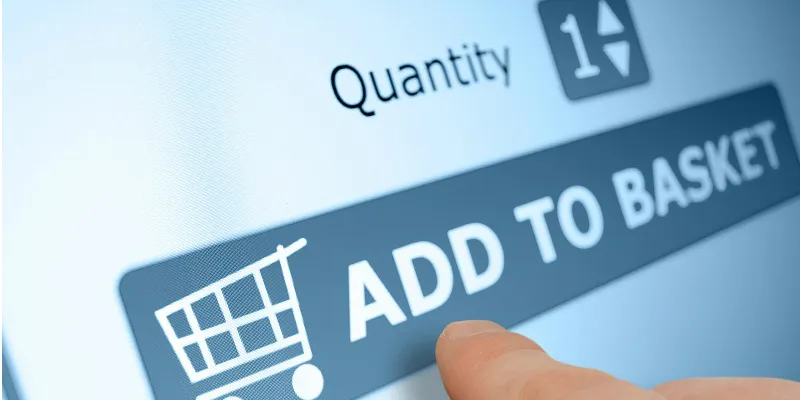The trend of discretionary shopping in India
With fashion brands dropping new collections every month, buyers always have something new to look at in the store window.
When was the last time you shopped for something out of need? I bet the last purchase you made was driven out of a desire to own something that you could also do without. It is no longer about buying what you ‘need’ or, for that matter, what you ‘want’. Likewise in fashion, the desire to own a piece of the latest trend in your wardrobe is far higher. It is evident when we look around us that brands have increased the pace at which they are entering our market and fast fashion rules the roost.

Image credit: Shutterstock
There are seven key factors that come together to influence discretionary shopping.
a) Discovery
Back in the day, the only exposure we had to fashion was what we saw in the movies or in music videos. The lesser said about Bollywood fashion, the better. With the advent of fashion magazines and eventually social media, consumers widened their horizon of fashion. An inherent part of fashion and style these days is discovery based. You either see it in a magazine or on an image sharing platforms like Pinterest and Instagram.
b) Aspiration
Consumers discover these styles, which creates the desire to update their wardrobe and be relevant to the current trend. Consumers want what an actor wore to the launch of their movie or what they post on their social media with an OOTD (outfit of the day) hash tag. Everybody wants to be a fashion icon in their own sense, dare I say. India is an increasingly aspirational country of over 1.3 billion people and fast growing, coming in second only to China.
According to predictions by McKinsey, the Indian consumer market is set to hit $1.5 trillion by 2025, becoming the fifth largest after USA, Japan, China, and UK. And there is no denying, given the increasing size of the upper middle class population with their increased incomes and high spending power. Add on the rapid increase in the number of Internet connection, smart phones and urbanisation to the equation and we have a success story on our hands.
c) Millennials
Teenagers and young women form the largest chunk of the shopping bucket. Brands are increasingly targeting teenagers because buying decision influence now sets in at a younger age. By grabbing the mindspace (and hence wardrobe space) of the younger generation, brands aim at getting them into the habit of using their products/features to build an association that would last through the years.
d) Mobile and Internet
Millennials rely primarily on mobile and online portals to do their research and find the best products at the best price. Of the overall time consumers spend on various media each day, the Internet garners 299 minutes, compared with 157 minutes spent on watching television, 71 minutes on the radio, and 50 minutes on printed publications, according to Nielsen. Businesses are increasing their digital spends in order to tap into this window of opportunity that they have with users (both current and potential). The consumer is evolving and we are leading them through this evolution with the help of emerging media. According to a BCG report, the digitally influenced purchases are expected to hit $150 billion in India by 2016.
e) Transaction versus experience
Men purchase, whereas women shop. For men, purchasing outfits is like a transaction. I need a white shirt or dark blue denim that is how it is mapped in the mind. It is just an activity where I go into a store and try on a couple of options before I make the purchase. For women, the process is elaborate and personal; it is an experience rather than an activity. When women walk into a store, it is not just an outfit piece that they look at buying (although that might have been the initial intention). They evaluate how the look can be completed with matching shoes or accessories, perhaps jewellery pieces and so on. The outfit was the need or want, the look is the desire aspect that comes into play.
f) Geographical restrictions
At present, only the metros and a select few Tier 2 cities have prominent brand stores. Geographical restrictions hinder the conversion of an inspiration. Online shopping has broken this barrier to a large extent. Consumers across the country now have inspiration feeds on social media, like Instagram or Pinterest, along with m-commerce to fulfil their want of acquiring the latest trends.
g) Reduced efforts
Discretionary shopping requires brands to convince customers to spend their money on products they want, over need. Consumers can get overwhelmed with the choices that online retailers present them with. They want us to customise the collection for them, to make the shopping process simpler. This is where curated collections and a personalised feed play a role to eliminate effort from the activity.
Discretionary shopping is here to stay. Although brick and mortar stores will continue to exist, with the increasing ease of discovery and purchases on your mobile device, effort minimisation and personalisation will play a key role in keeping this behaviour alive in the economy.
(Disclaimer: The views and opinions expressed in this article are those of the author(s) and do not necessarily reflect the views of YourStory)
About the authors
Arjun Zacharia(CEO) and Ankit Sabharwal(CPO) are the founders of Wooplr, a fashion discovery app. Earlier this year the Bengaluru based startup had raised $5 M from Helion Ventures.
Recommended read: Online product discovery platforms—the woman shopper’s new best friend
Related video:







